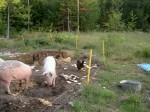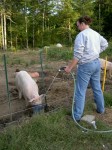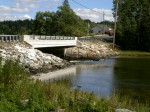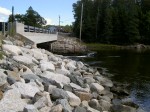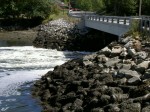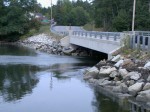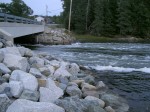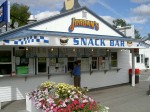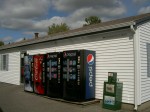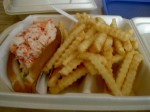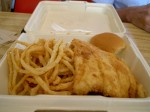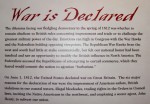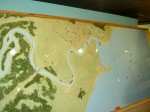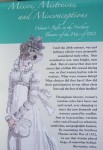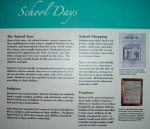Our daughter believes in being as self sufficient as possible. So through the years she has learned many skills including blacksmithing, sheep tending, wool spinning, carpentering, gardening, soap making, candle making, sewing, vehicle repairing, solar and wind power harvesting, etc. The current focus in on animal raising and butchering.
Here’s Alexa feeding the pigs:
The free range chickens try to get a good share before the pigs, well, make pigs of themselves.
The pigs need to be watered, too. This one actually drank from the hose but I wasn’t quick enough with my camera to get a picture of that.
Alexa says when the weather is hot and she’s filling the big bowl behind the pig they stand in the stream of water and use it to scratch their itches. It wasn’t hot when we were there so we didn’t get to see that.
Here’s some large scale container gardening.
Try that right outside your front door and you might get some complaints from the neighbors. That’s one of the advantages of living on a BIG piece of land in Maine with friends. You can do this large scale living while still being a minimalist. And we got really FRESH eggs.
TTYL,
Linda


